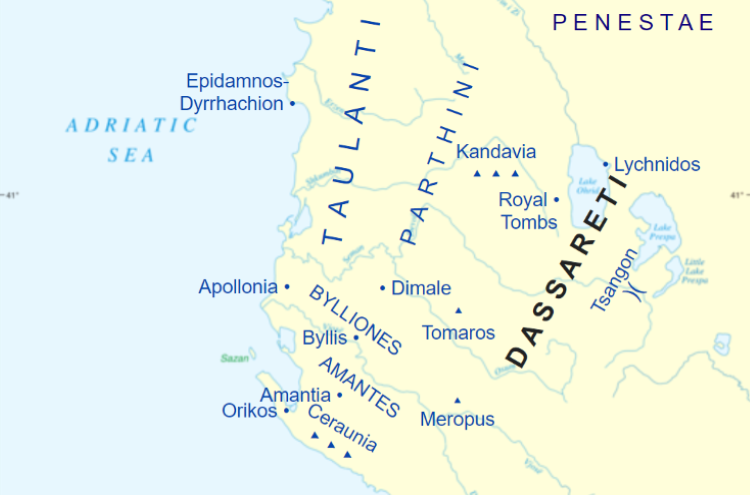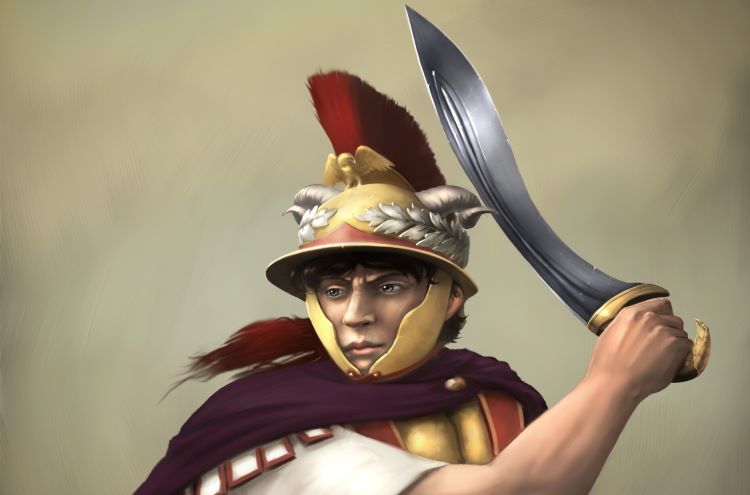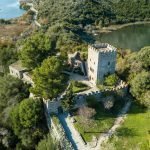
Dassaretis: A Short Story of an Ancient Scorched Land
Dassaretia or Dassaretis (or Dassaretae) was an ancient region located in the area that currently corresponds to the southwest Greek border or southeast Albania. The region was inhabited by the Illyrian tribe of the Dexari (i.e. the Dassareti), just south of the tribe of the Enchelees; that is, immediately south of the lakes Lychnidos (Ohrid) and Lyncestis (Great & Small Prespa). The Dexari/Dassareti, native dwellers of this area, gave their name to this region.
A Strategic Country
The region of Dassaretis was of strategic importance in ancient times. This was because of the geographical and geopolitical features of the surrounding regions. In ancient times, the coast of southern Illyria (or current Albania) was marshy and harbourless. With the exceptions of Lissus (Lezhë), Dyrrachium (Durrës), and Apollonia (Pojan, near Fier), the rest of the seacoast was inhospitable. As such, any army that aimed at controlling this seaboard had to establish control of the inland hilly regions. Dassaretis was one of such regions; whoever controlled it could make effective descents on any army positioned along the seacoast.

The Dassareti were also the south-eastern neighbors of the Illyrian Taulantii/Parthini and northern neighbors of Epirus. Its northern border was marked by the middle and upper stream of the Genusus river (modern Shkumbini river). Through this valley passed the all-important via Egnatia which functioned as a corridor since before the Romans landed in Illyria. Possession of Dassaretis could thus threaten the via Egnatia from the south.
Gateway of Macedon
Dassaretis could also serve as a springboard to jump deeply inland; notably to enter Macedon from southern Illyria. Dassaretis itself was conveniently positioned in between the lands occupied by the Illyrians (the Dassareti were Illyrians) and the Macedones. In fact, the eastern and southern border of Dassaretis also marked the border between the land of the Illyrians and upper Macedon. In modern terms, this border corresponds to the current border between Albania and Greece just south of the Prespa Lakes. In this sense, the possession of Dassaretis allowed for an easy passage of an army into Macedonia; either through the area in between lake Ohrid and the Prespa lakes leading into Lyncestis or through the Cangonji-t Pass leading into Orestis (or current plain of Florina). It’s thus no wonder why the initial fighting between the Romans and the Macedonians during the Third Macedonian War concentrated on Dassaretis.

A Short Story Covering the Classical and Hellenistic Period
The first attested ruler to have controlled Dassaretis was likely Bardylis I (r. 393-358 B.C.E.). This state was concentrated around lake Lychnidus and was based on tribal organization and military prowess. During Bardylis’ rule, the Illyrians made continuous descents into Macedon, likely using Dassaretis as a springboard. The Illyrian threat over Macedon ended only when Philip defeated Bardylis in open battle (358) and then placed Dassaretis under a loose Macedonian rule.

Alexander “the Great” secured his father’s hold over Dassaretis in his campaign against the Illyrians in 335. In that expedition, the Illyrians had to burn the city of Pelion so it did not fall into enemy hands. Antipater, who governed Macedon in Alexander’s absence, founded in the westernmost point of Dassaretis the city of Antipatrea (modern Berat). From Antipater’s governance and throughout the next century, the region served mostly as a buffer zone between the Illyrians, Epirus, and Macedon and then between Rome and Macedon.
When Pyrrhus of Epirus expanded his domain in southern Illyria, he gained control of Dassaretis as well. Before crossing into his famous Italian campaign, Pyrrhus made several inroads into Macedon. Dassaretis may have played a strategic role in these inroads. The Epirote kept his region under his rule throughout his entire reign. In the following years, Dassaretis detached from Epirus and returned to serve as a buffer zone between ancient states. Being a region in between borders, armies fighting each other in this area turned Dassareties into a scorched land.
Conquest by Rome
In 200, when Rome began the Second Macedonian War, Philip V of Macedon was in possession of Dassaretis. When the war concluded in 197, the Romans signed a treaty with Macedon which assigned Dassaretis within the Roman protectorate in Illyria. This clause made the Romans direct neighbors of the Macedonians. There was no longer a buffer zone between the two states, an arrangement that laid the ground for the Third Macedonian War.

In the course of the Third Macedonian War, the Romans used Dassaretis to make inroads into Macedon. The move was in itself unsuccessful; the Republic settled the conflict by advancing into Thessaly instead. In theory, they could have used Dassaretis to support their supply lines. However, the region was actually poor in resources. It could thus not accommodate the supply needs of a large army; it seems it could not even support the establishment of a small native state or kingdom with it as its center.
As Rome conquered the whole of the Balkans and reshaped its borders, Dassaretis lost its strategic value. Only in modern times, the region regains its strategic importance but the term “Dassaretis” becomes obsolete. Currently, the land once occupied by the Dassaretians is referred to as the district of Korça. It is named after the Albanian city of Korça, once the ancient city of Bantia in Dassaretis.
Bibliography
Badian, E. (1952). Notes on Roman Policy in Illyria (230-201 B.C.). Papers of the British School at Rome. Vol. 20. Pp. 72-93.
Hammond, N. G. L. (1968). Illyris, Rome and Macedon in 229-205 B.C. The journal of Roman Studies. Vol. 58, Parts 1 and 2. Pp. 1-21.
Hammond, N. G. L. (1989). The Illyrian Atintani, the Epirotic Atintanes and the Roman Protectorate. The Journal of Roman Studies. Vol. 79. Pp. 11-25.
Historia e Popullit Shqiptar I. (2002). Akademia e Shkencave e Shqipërisë. Instituti i Historisë. BOTIMET TOENA, Tiranë.
Ilirët dhe Iliria te Autorët Antikë. (2002). Akademia e Shkencave e Shqipërisë. Instituti i Arkeologjisë. BOTIMET TOENA, Tiranë.








